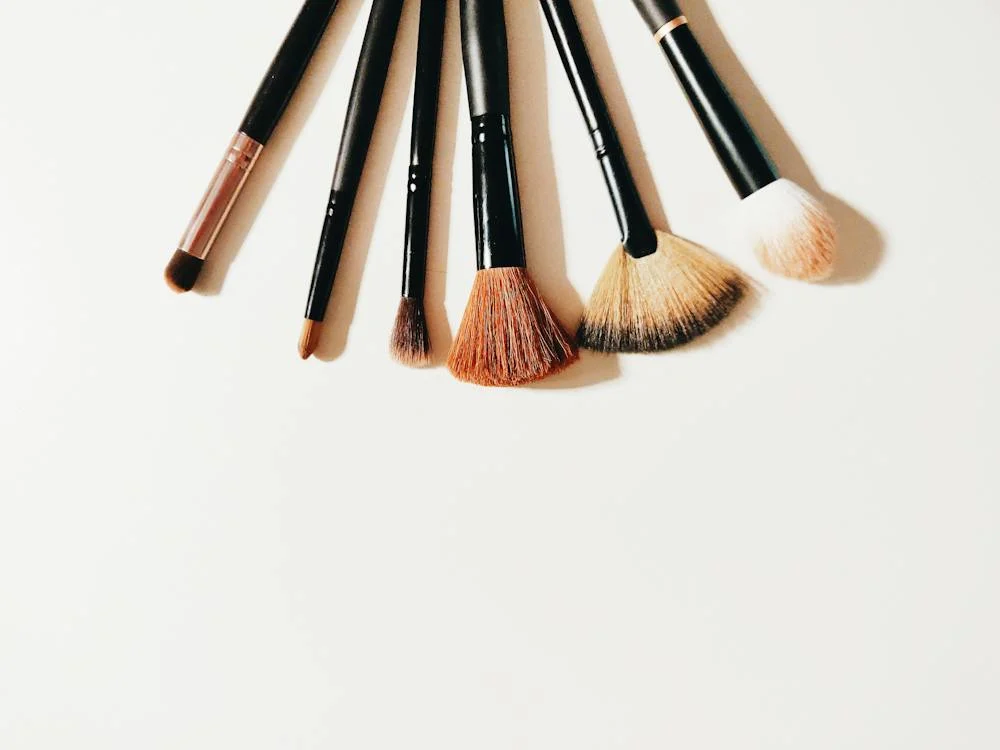Makeup tools are instruments for mastery and hygiene. To make your cosmetic application hassle-free, sanitary, and natural-looking, makeup brushes can help your daily beauty routine.
In terms of makeup tools, many beauty resources for beginners would recommend using makeup brushes for a better overall makeup experience. Although brushes are a few of the first tools on most people’s makeup bags, unfortunately, not everyone’s aware of using them correctly.
If you’re looking into buying your first makeup brush and you want to use it right, you’ve come to the right place.
Main Brushes You’ll Need
Exploring the world of makeup brushes can be quite overwhelming for beginners. Most makeup brushes are named right after their purpose, so paying attention to this piece of information is a good start.
While makeup brushes typically have the same components, each type differs in the hair’s volume, density, and texture. Your choice of brush can impact the way how your makeup looks and feels on your skin. Thus, pick high-quality, affordable brushes from Laroc Cosmetics and other trusted cosmetic stores.
Whether you’ll go for a simple or extensive look, here are seven brushes you’ll regularly need for your beauty routine:
1. Foundation Brush
A foundation brush is the best brush type for applying all kinds of foundation: liquid, cream, and powder. If the foundation brush has short bristles, it’s meant for liquid and cream foundation as it allows you to spread the foundation evenly. Meanwhile, long-bristled foundation brushes are for powder foundation.
When applying your foundation through this brush, take advantage of the longer bristles to spread the product on hard-to-reach areas of your face, including the crevices of the nose, mouth, and around the eyes.
Some people who use liquid foundation replace this brush with a sponge while some use both. The foundation brush transfers the product and spreads it all over the face while the sponge blends and evens out the foundation without the awkward brush lines and streaks.
2. Powder Brush
To go further down the airbrushed finish, you can lightly set your foundation layer using a powder brush with setting powder. It has soft, loosely-packed bristles that can dispense powder onto your face with just the right amount. A powder brush pairs relatively well with both types of setting powders, whether the loose or pressed type.
To use it properly, pick up an adequate layer of setting powder and tap the excess product. Then, dust it under your eyes and the T-zone area, which are oilier areas that require more setting.
3. Blush Or Bronzer Brush
A little bit of cheek color won’t hurt! You can add a pop of color to your cheeks with a blush product to achieve an instant glow. While some prefer using their fingers alone to dispense the color, you can also opt for a blush brush for a more even application.
For powder blushes, look for a dome-shaped blush brush with long, fluffy bristles. This brush shape and volume is ideal for lightly dispensing powder pigments like blush and bronzer. Depending on your face shape, you can apply blush in different ways, but it’s usually on the apples of the cheeks or along the cheekbone. For the bronzer, sweep a thin layer from your foreheads to cheekbones, brushing in a ‘3’ pattern.
4. Eyeshadow Shading And Blending Brush
Now that your eyes are ready for some action, grab your eyeshadow shading and blending brushes—two small brushes you’ll need for a decent eye look. Essentially, the shader brush will transfer an opaque, concentrated layer of pigment on your lids. It has a denser volume with a flat, rounded tip, which is perfect for picking up and packing heavy payoffs.
Then, the blending brush, as the name implies, takes care of the even blending and diffusing of color on your lids. It has a tapered end with fluffy bristles to protect the sensitive skin surrounding your eyes from irritation. The secret to a successful smokey eye? It’s this brush right here.
5. Eyebrow Brush
An eyebrow brush usually has a dual tip with a spoolie on one side then a flat, angled brush on another. The latter side is used for drawing individual, hair-like strokes to make your brows look natural. You can achieve natural brows by using this brush type with a brow powder or gel that usually comes in a pot container.
On the other end of the brush, the spoolie can help shape your brows through combing. Before filling in your brows, you can comb your brows to your preferred shape. If you’ve applied too much brow product, the spoolie also comes in handy for softening your brows.
Before every use, make sure your spoolie is clean and clump-free.
Final Thoughts
The brushes discussed are the essentials on your makeup arsenal. Thus, feel free to purchase brushes that you need, find ways to make the most of their purpose, and enjoy experimenting.
To keep your brushes in good shape, practicing proper care and maintenance like regular cleaning is recommended. This way, your brushes can offer their best performance such as dispensing the right product amount and pigment, as well as keeping your face free from dirt and bacteria.

